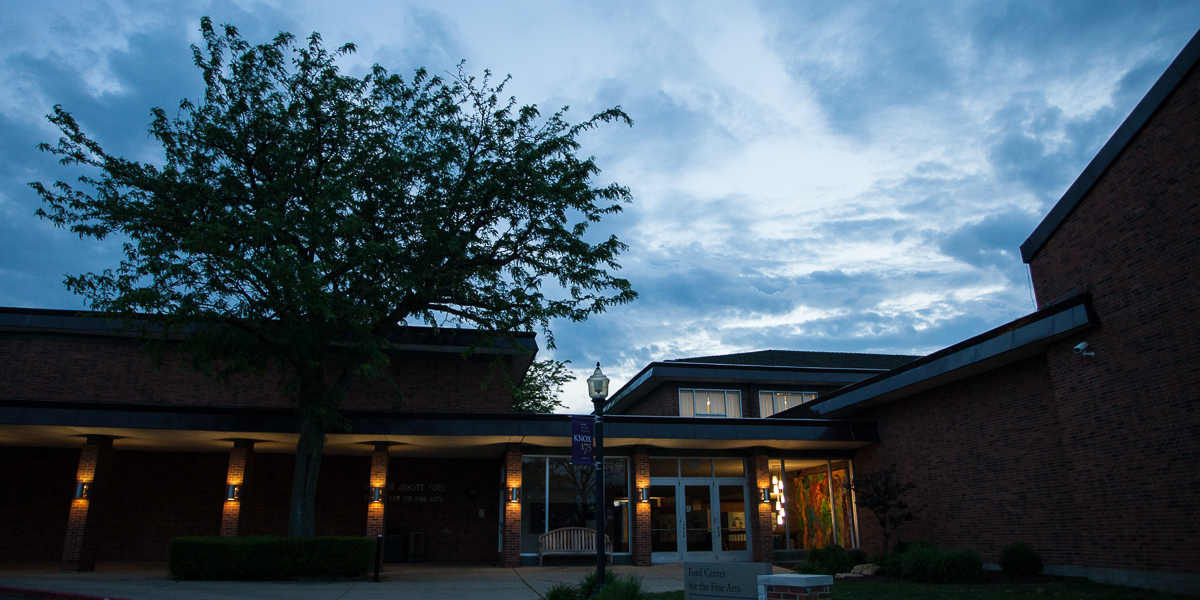

Venture Boldly

Office of Communications
2 East South Street
Galesburg, IL 61401

"The burning prairie is one of the most beautiful scenes. Every acre, for hundreds and hundreds of miles in grass, which dies and dries, then burns over, leaving the ground a black, doleful color... where the grass is thin and short, the fire slowly creeps with a feeble flame, which one can easily step over..." -- from Letters and Notes on the North American Indians, published in 1841 by George Catlin, and read by Knox Professor Stuart Allison to the burn crew prior to this year's Prairie Burn at Green Oaks.
Knox College students torched more than 20 acres of grassland in the annual Prairie Burn, held April 1 at Green Oaks, the college biology field station, the oldest prairie restoration in the region.
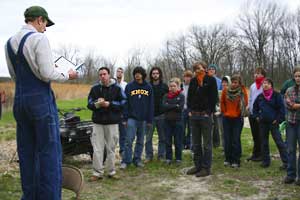 |
Prior to the burn, Stuart Allison, associate professor of biology and director of Green Oaks gathers the burn crew to review fire safety guidelines. Here, he also offers a meditation on the prairie, as he reads an excerpt from a 19th-century essay about fires that raged across the midwestern prairies prior to the advent of agriculture. |
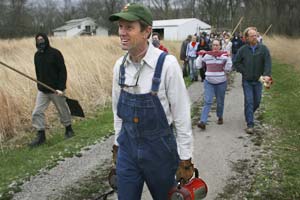 |
Professor Allison leads the burn crew of more than 50 students, faculty and staff. |
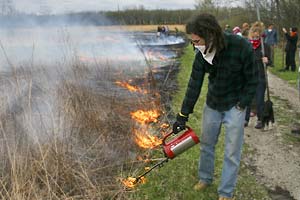 |
A student uses a kerosene "drip torch" to ignite the edge of the field. |
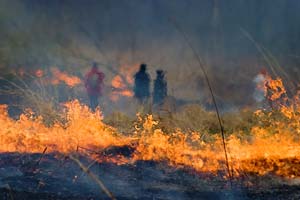 |
Despite strong winds on the day of the burn, heavy rains the week before the burn made the fire only slightly harder to start, and much easier to control. |
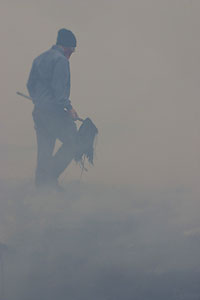 |
A student walks through a burned area. |
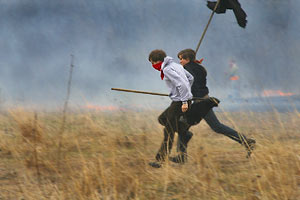 |
Two students sprint across a field during the burn. The group of about 50 students and faculty used cloth mops and rubber "flappers" to limit the spread of the fire. |
|
Within a week the prairie will begin growing again, reaching several feet in height by mid-summer. |
Praire burn photography by Peter Bailley and Charles Brown. |
Published on April 02, 2007